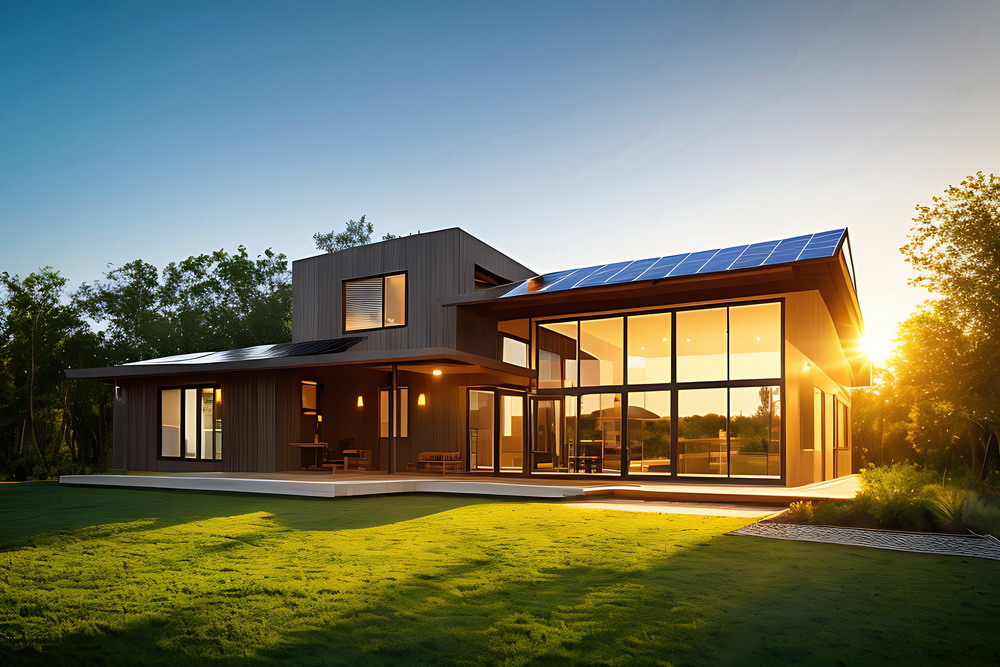As people are becoming more conscious of the effects of climate change, homeowners are actively finding ways to make their homes eco-friendlier. With energy costs on the rise and a growing concern for our planet’s health, making sustainable home improvements is not just a wise choice financially, but it can also help build a greener future.
Solar Panels
Adding solar panels to your home can make it more eco-friendly. They transform sunlight into electricity, so you can power your home with clean, renewable energy. This means you use less fossil fuels and lower both your carbon footprint and energy costs.
Solar power for your home is becoming more cost-effective and efficient. And according to the experts at Vivint Solar, many governments offer incentives and rebates for solar panel installation, further reducing the upfront costs.
Green Roofs
A green roof, also known as a living roof, consists of a layer of vegetation planted on top of a waterproof membrane. This innovative home improvement can provide a range of environmental benefits, including improved air quality, reduced storm water runoff, and natural insulation.
Having a green roof can help with maintaining your house’s temperature, allowing it to stay cooler during summertime and warmer in the winter. This means using less energy overalland paying less for heating and cooling bills. Moreover, green roofs can transform unused rooftop space into a beautiful, natural sanctuary that promotes biodiversity and offers a peaceful retreat.
Energy-Efficient Windows
Upgrading your home’s windows to energy-efficient models can have a considerable impact on your energy usage and carbon footprint. Energy-efficient windows are specially designed to reduce the amount of heat that enters and leaves your home. You’ll stay cooler during hot summers and warmer during chilly winters. Therefore, you will not need to pay as much for artificial heating and cooling, which means lower energy bills.
Additionally, these windows often feature low-emissivity (Low-E) coatings that reflect harmful UV rays, protecting your home’s interior from sun damage and fading. Upgrading from old single-pane windows to double or triple-pane ones means your home’s energy efficiency can greatly increase and you’ll enjoy a cozier living space.
Rainwater Harvesting Systems
Water is an essential, yet often scarce, resource. Installing a rainwater harvesting system can help you conserve water and reduce your reliance on municipal supplies. A rainwater harvesting system collects and stores rainwater from your roof, which can be used for various purposes such as watering plants, flushing toilets, and even laundry. By utilizing rainwater, you can reduce your water consumption, lower your water bills, and lessen the strain on local water resources. Furthermore, harvesting rainwater can help reduce stormwater runoff, which can contribute to flooding and water pollution.
Sustainable Landscaping
A well-designed, sustainable landscape can not only enhance your home’s curb appeal but also provide various environmental benefits. By incorporating native plants, you can create a low-maintenance landscape that conserves water, supports local wildlife, and reduces the need for chemical fertilizers and pesticides. Moreover, strategically placed trees and shrubs can act as natural barriers, providing shade and reducing wind exposure. This can help keep your home cooler in the summer and warmer in the winter, ultimately reducing your energy consumption.
Conclusion
Making eco-friendly home improvements is a practical and responsible choice for homeowners who want to minimize their environmental impact and save on energy costs. Investing in some of the above means you can create a greener, more efficient living space that benefits both your wallet and the planet.
These eco-friendly improvements not only contribute to a healthier environment but also add value to your property and enhance your quality of life. So, start planning your eco-friendly home improvements today and take a step towards a more sustainable future.

